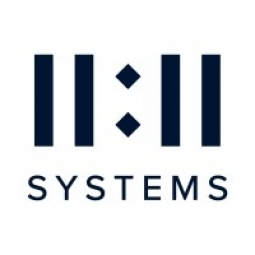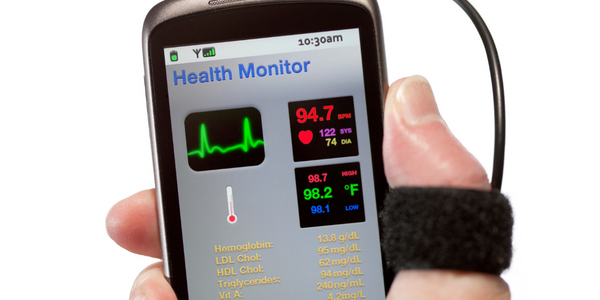Customer Company Size
Large Corporate
Region
- America
Country
- United States
Product
- iland Continuity Cloud©
Tech Stack
- VMware
- SQL servers
Implementation Scale
- Enterprise-wide Deployment
Impact Metrics
- Cost Savings
- Productivity Improvements
Technology Category
- Infrastructure as a Service (IaaS) - Cloud Computing
- Infrastructure as a Service (IaaS) - Cloud Storage Services
Applicable Industries
- Healthcare & Hospitals
Applicable Functions
- Business Operation
Use Cases
- Remote Asset Management
- Predictive Maintenance
Services
- Cloud Planning, Design & Implementation Services
- System Integration
About The Customer
Help At Home, Inc. provides the in-home care and respite services that elderly, medically fragile, and disabled individuals need. In business for over 30 years, they employ a large staff of trained Personal care Aides, respite care Givers, nursing Assistants, and registered nurses who provide 4x7 inhome care. With over 100 U.S. offices, Help at Home’s operational footprint includes Illinois, Missouri, Indiana, Michigan, Alabama, Mississippi, and South Carolina. The company has notable contracts with the Illinois Department on Aging and other state, regional, and municipal agencies involved in custodial home care services.
The Challenge
Help at Home’s IT Manager needed to implement a robust and customized business continuity plan that minimizes downtime of mission critical applications used by hundreds of employees. It also needed to meet their Recovery Time Objective, and be easily managed by his lean staff and fit into a limited budget. The IT organization at Help at Home is asked to provide increased services to the business while at the same time reducing IT expenditures. They began to investigate virtualization as a method of making IT more responsive to business needs. This includes more efficiently providing business services and ensuring high availability, as well as lowering IT costs, streamlining IT management, and becoming more energy efficient.
The Solution
Help at Home selected the iland Continuity Cloud. It’s specifically designed to provide secure costeffective business continuity options to enterprises of all sizes. The iland Continuity Cloud provides not just a replication target for Help at Home’s data, but the entire infrastructure solution including redundant and private standby cloud resources. To achieve the desired recovery time objective (rTO), Help at Home selected a continuously live VM on the iland continuity cloud for continual data replication of their sQL servers. This combination of live and standby VMs within the iland continuity cloud minimizes IT expenditures—but allows Help at Home to easily test their standby environment and quickly recover from disasters.
Operational Impact
Quantitative Benefit

Case Study missing?
Start adding your own!
Register with your work email and create a new case study profile for your business.
Related Case Studies.

Case Study
Hospital Inventory Management
The hospital supply chain team is responsible for ensuring that the right medical supplies are readily available to clinicians when and where needed, and to do so in the most efficient manner possible. However, many of the systems and processes in use at the cancer center for supply chain management were not best suited to support these goals. Barcoding technology, a commonly used method for inventory management of medical supplies, is labor intensive, time consuming, does not provide real-time visibility into inventory levels and can be prone to error. Consequently, the lack of accurate and real-time visibility into inventory levels across multiple supply rooms in multiple hospital facilities creates additional inefficiency in the system causing over-ordering, hoarding, and wasted supplies. Other sources of waste and cost were also identified as candidates for improvement. Existing systems and processes did not provide adequate security for high-cost inventory within the hospital, which was another driver of cost. A lack of visibility into expiration dates for supplies resulted in supplies being wasted due to past expiry dates. Storage of supplies was also a key consideration given the location of the cancer center’s facilities in a dense urban setting, where space is always at a premium. In order to address the challenges outlined above, the hospital sought a solution that would provide real-time inventory information with high levels of accuracy, reduce the level of manual effort required and enable data driven decision making to ensure that the right supplies were readily available to clinicians in the right location at the right time.

Case Study
Gas Pipeline Monitoring System for Hospitals
This system integrator focuses on providing centralized gas pipeline monitoring systems for hospitals. The service they provide makes it possible for hospitals to reduce both maintenance and labor costs. Since hospitals may not have an existing network suitable for this type of system, GPRS communication provides an easy and ready-to-use solution for remote, distributed monitoring systems System Requirements - GPRS communication - Seamless connection with SCADA software - Simple, front-end control capability - Expandable I/O channels - Combine AI, DI, and DO channels

Case Study
Driving Digital Transformations for Vitro Diagnostic Medical Devices
Diagnostic devices play a vital role in helping to improve healthcare delivery. In fact, an estimated 60 percent of the world’s medical decisions are made with support from in vitrodiagnostics (IVD) solutions, such as those provided by Roche Diagnostics, an industry leader. As the demand for medical diagnostic services grows rapidly in hospitals and clinics across China, so does the market for IVD solutions. In addition, the typically high cost of these diagnostic devices means that comprehensive post-sales services are needed. Wanteed to improve three portions of thr IVD:1. Remotely monitor and manage IVD devices as fixed assets.2. Optimizing device availability with predictive maintenance.3. Recommending the best IVD solution for a customer’s needs.

Case Study
HaemoCloud Global Blood Management System
1) Deliver a connected digital product system to protect and increase the differentiated value of Haemonetics blood and plasma solutions. 2) Improve patient outcomes by increasing the efficiency of blood supply flows. 3) Navigate and satisfy a complex web of global regulatory compliance requirements. 4) Reduce costly and labor-intensive maintenance procedures.

Case Study
Cloud-based healthcare solution for Royal Philips
Royal Philips wanted to launch its cloud-based healthcare solution HealthSuite Digital Platform in China to deliver services to help cope with challenges related to urbanization and population growth. Philips wanted to achieve this goal by combining mobile, cloud computing and big data technologies. To bring this platform and product to market, Philips required cloud computing and local technical service capabilities in China, in addition to a flexible IT infrastructure that could handle user requests.








